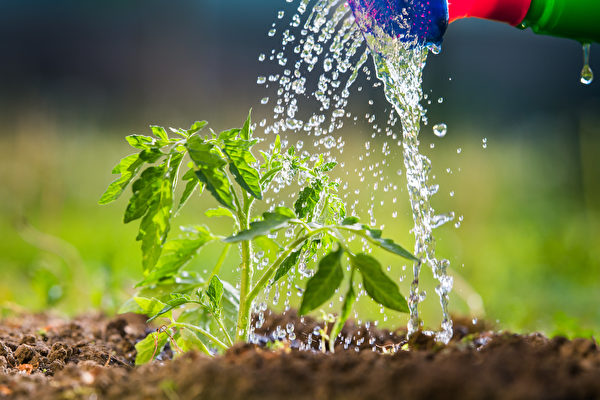Planting in the garden requires regular watering for healthy growth. Despite watering seeming simple, experts say many people water their plants incorrectly, which may lead to their demise. So, what is the correct way to water plants?
According to a report by the UK’s Daily Mirror, if the plants you have planted appear wilted and on the brink of death, it could be due to improper watering methods.
Gardening expert and influencer Sabrina revealed a common mistake people make when watering plants. She admitted to making this mistake herself in the past.
Sabrina pointed out that the mistake is watering plants from above. Many people do this without a second thought, but it can lead to plant diseases caused by bacteria or fungi.
To ensure the health of plants, Sabrina advised watering from the bottom to avoid getting the leaves wet, as this could lead to premature death of the plants.
She also recommended planting marigolds in the garden as they attract beneficial insects to help repel pests. Additionally, it’s important to regularly check for pests, as they often hide on the underside of leaves. If you find any pest eggs, simply remove them.
By using these tips, Sabrina emphasized that you can save time and money, helping you manage a more successful garden.
American magazine Better Homes and Gardens previously discussed the proper watering techniques for indoor plants.
As a rule of thumb, if you notice the leaves beginning to wilt, it’s time to water. However, you shouldn’t wait until this point as the plants will start looking unhealthy by then.
Develop a habit of checking indoor plants at least once a week to see if they need watering. The best way to determine if watering is needed is by inserting a finger into the potting soil about 1 inch (2.5 cm) deep to check if it’s dry or moist. Water immediately if it’s dry, and check again in a day or two if it’s moist.
For smaller indoor plants, lift the entire pot. If it feels light, it needs watering. After adding water, you can feel the weight increase, indicating the soil has absorbed water.
When watering, use room temperature water. Both too cold and too hot water can harm indoor plants. Most unsoftened tap water is suitable for watering indoor plants.
As the roots of indoor plants are mostly buried in the soil, surface watering is insufficient. Keep pouring water until excess water drains out from the pot’s drainage holes at the bottom.
If your pots are placed on saucers, the soil may absorb extra water. After watering for about 10 minutes, remember to empty the saucer to prevent root rot due to excessive moisture.
Alternatively, you can pour water into the saucer for the soil to absorb through the bottom drainage holes. Stop when the soil stops absorbing water. This method is suitable for plants that don’t like their stems getting wet, such as cacti, succulents, and African violets.

